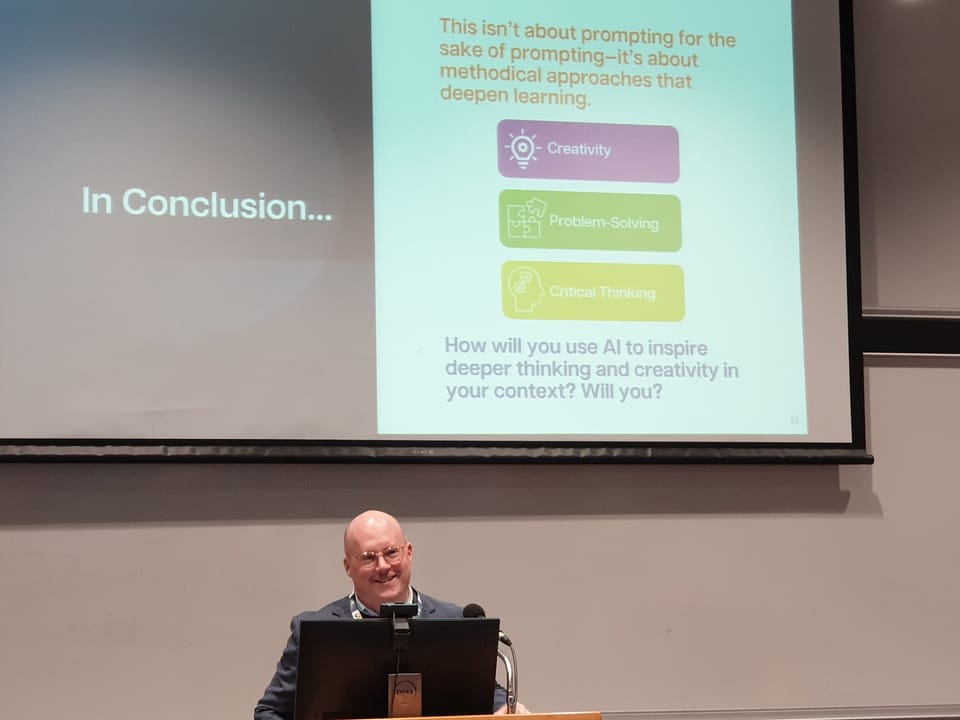Jim Diamond Using Rhetoric in Prompting

Throughout 2024, I've learned several techniques to use when prompting AIs for answers. Professor Jim Diamond from Johns Hopkins borrowed from the trivium (grammar, dialectic, and rhetoric) while sharing five canons of prompting. My notes are sketchy so I'm just going to offer my understanding next to each of the five canons.
Invention. Offer a main idea when starting your prompt.
Arrangement. Give a logical organisation when prompting, perhaps top-down or in a funnel from broad to specific.
Style. Express your idea clearly by using a vocabulary that encourages the AI to express answers that might require references deep into its large language model.
Memory. Commit the AI to only those facts and foundational information in its previous chats. Or permit it to reach across the wider internet.
Delivery. Simple bullet statements. Images, video, or audio answers. All these modes are possible with AIs today.
Several times during his presentation on the Southeast Technological University campus, Professor Diamond emphasized process over the product. It is the process of asking smart questions that we can expect to get smart answers. It is by hammering home the process of effective prompts that teachers can help students become better thinkers.
Jim Diamond on better prompting
Diamond's approach encourages better thinking by developing habits of the mind. His presentation took me back to sessions with Malham Wakin, a university lecturer who used dialectic as inquiry. Wakin sparked internal dialogues with his students just like Diamond encourages dialogue with AIs.
And just like Wakin warned in my classroom in the 70s, if you let learners do this independently without offering them guidance, they could easily pollute their collections of personal knowledge if all they accomplish is gathering spurious content.
Comments ()